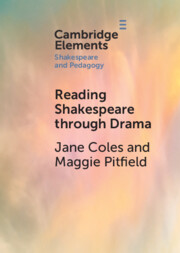Element contents
Reading Shakespeare through Drama
Published online by Cambridge University Press: 08 June 2022
Summary
- Type
- Element
- Information
- Online ISBN: 9781009004268Publisher: Cambridge University PressPrint publication: 07 July 2022
References
- 11
- Cited by

